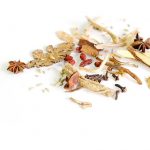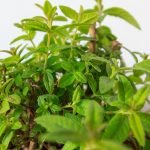Schisandra (Schisandra chinensis [Turcz.] Baill.) grows throughout China, Japan, Korea and Eastern Asia at large. It is a climbing vine growing on wet banks or by the river. It is unique in being a member of the family Schisandraceae.
The dried fruits are widely prescribed throughout China as wu wei zi (five tastes berry) and has been stalwart of traditional Asian and Chinese medicine for millennia. It is not the same in behaviour as S. sphenanthera which has a different biochemical profile.
It is widely used as a tonic especially for treating a range of conditions- heart, inflammation, liver and for relieving stress. It seems to have many benefits associated with its use (Panossian and Wikman, 2008).
The Soviet Union studied its benefits from the 1940s but largely discontinued these studies from the 60s onwards. A number of studies started in the Western world from the 1950s to understand these benefits, looking at sports, airline staff and the military. It appeared that the Nanai tribe in Siberia who are generally hunters relied on the berries to improve night vision and their stamina. It also minimised feelings of hunger and thirst which hinted at its neurological effects. The Russians focused on the science behind better work performance and improving mental acuity.
Components
The major lignans components of the S. chinensis fruits are schisandrin, γ-schisandrin, deoxyschisandrin and gomisin A (He et al., 1997).
Its role as an adaptogen is perhaps most intriguing. It is a safe, nontoxic substance that reduces the impact of stress and normalises physiological functions. It has also been used for treating coughs, tiredness and fatigue, insomnia, neurological and nervous conditions, urinary and reproductive tract conditions, improving physical fitness and finally enhancing the immune response. Generally, it is prescribed for every condition but in clinical terms, much more research is required to verify its power.
Latest research looks at its hepatoprotective, cardiovascular as well as the anti-inflammatory benefits. There is also interest in its efficacy against pneumonia, cognition and of course diabetes. Its power may well reside in the 40 lignans found in the seed oil but research needs to investigate the whole berries.
References
He, X. G., Lian, L. Z., & Lin, L. Z. (1997). Analysis of lignan constituents from Schisandra chinensis by liquid chromatography-electrospray mass spectrometry. Journal of Chromatography A, 757(1-2), pp. 81-87 (Article)
Panossian, A., & Wikman, G. (2008). Pharmacology of Schisandra chinensis. Bail.: an overview of Russian research and uses in medicine. Journal of Ethnopharmacology, 118(2), pp. 183-212 (Article)


Leave a Reply